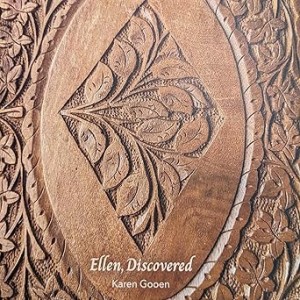Rebecca Clarren was overcome when she learned that her family’s land in Jew Flats, South Dakota — the basis of their comfortable, middle-class life in America — was stolen from the Lakota.
Clarren, a prize-winning journalist who has written extensively about the American West for The Nation, Ms., Salon, and other publications, grew up hearing stories of her immigrant family bravely homesteading on the Dakota prairie. She is shaken when she realizes that she and her family have benefited “from centuries of federal mistreatment of Indigenous peoples.” She is advised by Native American Judge Abby Abinante to study Jewish teachings about repair and healing, “because justice works best when it is grounded in one’s own culture.”
Clarren joins with her rabbi in the tradition of havruta, studying together, to dig below the mythmaking and understand how she can atone for this wrongdoing. “This entire book can be read as a land acknowledgment,” she writes.
The author describes the untold, unexpected history of Jewish settlers in the West. Jewish refugees from the Pale of Settlement were not welcomed by the assimilated German Jews, who considered the poorer Eastern European immigrants “embarrassing.” These German Jews organized to send the new arrivals West. At the same time, Congress was clearing the prairie of Native Americans for white settlers and for westward expansion of the railroad. The 1862 Homestead Act promised 160 acres to those who built a home and tilled the land, whether they were citizens or not. What a gift this must have seemed like to the impoverished Russian Jews who were forbidden to own land in their own country. Intrigued by posters about free land in the Dakotas, 75,000 Russian Jews — Clarren’s ancestors among them — went West.
Clarren writes with laser focus about the government’s efforts — military, political, legal, and cultural — to remove Indigenous people. They slaughtered millions of buffalo, the main source of food for the Lakota. Their tactics ranged from stealing land and forcing resettlement, to abducting of children to distant boarding schools, to outlawing religious practices and breaking treaties, to destroying sacred sites (the most devastating being He Sapa in the Black Hills, which the US carved up into Mount Rushmore) and committing outright massacres. Even the so-called humanitarian USDA commodity food program — implemented because Lakota lands were so depleted that people couldn’t raise their own crops or animals — was injurious. The free, highly processed foods that the program offered were so laden with sugar, starch, salt, and fat that rates of diabetes skyrocketed across reservations.
After the Pick-Sloan program dams destroyed “more Indigenous land than any other public-works project in American history,” thirty percent of all reservation residents on the Cheyenne River were forced to relocate — the “same as the estimated percentage of how many Jews left the Pale and came to America at the turn of the 20th Century.” Is it any wonder that the Lakota are among the poorest people in the country today, with the lowest life expectancy?
Sifting through scrapbooks, old correspondence, photographs, and interviews, Clarren comes to know her antecedents who settled “the little shtetl on the prairie”: her great-great grandfather, Harry Sinykin, obtained a free homestead after escaping a pogrom in Odessa, and her great-great-grandmother, Faige Etke, took her mikvah in a frozen creek bordered by wheatfields. She also learns about her bronco-riding, Prohibition-defying, oil well-digging Uncle Louie, known locally as “Lou the Jew.” Caught up in the American myth, some of Clarren’s forebears knew their Lakota neighbors, but they didn’t realize that their “free land” depended on the decimation of the Native people.
Clarren, on the other hand, knows and feels this fact acutely. In addition to studying with a rabbi, she engages in extensive conversations with the Lakota people whom she meets when she travels to South Dakota as a “tourist of [her] personal history.” With her powerful book, Clarren not only shares this hidden history, but continues to “pursue justice, to repair the world, to take responsibility for our part.”
Elaine Elinson is coauthor of the award-winning Wherever There’s a Fight: How Runaway Slaves, Suffragists, Immigrants, Strikers, and Poets Shaped Civil Liberties in California.


